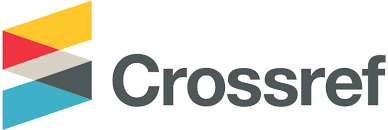Relationship between Perceived Ease of Use, Perceived Usefulness and Motivation Opportunity Ability Theory in Online Gamers Know-How Exchange
Abstract
Keywords
Full Text:
PDFReferences
Adams, Ernest (2013). Fundamentals of Game Design (3rd ed.). San Francisco: New Riders. ISBN 0-321-92967-5..
Ajzen, I., &Fishbein, M. (1980). Understanding attitudes and predicting social behaviour.
Ajzen, I. (1991). The theory of planned behavior. Organizational behavior and human decision processes, 50(2), 179-211.
Ang, S., Van Dyne, L., Koh, C., Ng, K. Y., Templer, K. J., Tay, C., &Chandrasekar, N. A. (2007). Cultural intelligence: Its measurement and effects on cultural judgment and decision making, cultural adaptation and task performance. Management and organization review, 3(3), 335-371.
Briliana, V., Wahid, N. A., and Fernando, Y. (2015).The effect of motivation, opportunity, ability and social identity towards customer-to-customer online know-how exchange.Advanced Science Letters, 21(4), 819–822. http://doi.org/10.1166/asl.2015.5887
Chin, W. W. (1998). The partial least squares approach to structural equation modeling. Modern methods for business research, 295(2), 295-336.
Chin, W., and Newsted, P. (1999). Structural equation modeling analysis with small samples using partial
Gefen, D., Straub, D., and Boudreau, M.-C. (2000). Structural Equation Modeling Techniques and Regression: Guidelines for Research Practice. Communications of AIS, 4(Article 7), 79.
Gruen, T. W. (2005). How e-communities extend the concept of exchange in marketing: An application of the motivation, opportunity, ability (MOA) theory. Marketing Theory, 5(1), 33–49. http://doi.org/10.1177/1470593105049600
Gruen, T. W., Osmonbekov, T., and Czaplewski, A. J. (2006).eWOM: The impact of customer-to-customer online know-how exchange on customer value and loyalty. Journal of Business Research, 59(4), 449–456. http://doi.org/10.1016/j.jbusres.2005.10.004
Gruen, T. W., Osmonbekov, T., and Czaplewski, A. J. (2007). Customer-to-customer exchange : Its MOA antecedents and its impact on value creation and loyalty, 537–549. http://doi.org/10.1007/s11747-006-0012-2
Hanson, W. E., Creswell, J. W., Clark, V. L. P., Petska, K. S., &
Creswell, J. D. (2005). Mixed methods research designs in counseling psychology. Journal of counseling psychology, 52(2), 224.
Herrewijn, L., and Poels, K. (2013). Putting brands into play: How game difficulty and player experiences influence the effectiveness of in-game advertising. International Journal of Advertising, 32(1), 17-44.
Koo, D. M. (2009).The moderating role of locus of control on the links between experiential motives and intention to play online games. Computers in Human Behavior, 25(2), 466-474.
Liang, T. P., &Yeh, Y. H. (2011). Effect of use contexts on the continuous use of mobile services: the case of mobile games. Personal and Ubiquitous Computing, 15(2), 187-196.
Lin, D., & Morris, R. (1997).Dynamics of random early detection.In ACM SIGCOMM Computer Communication Review (Vol. 27, No. 4, pp. 127-137).ACM.
Lu, H. P., and Wang, S. M. (2008). The role of Internet addiction in online game loyalty: an exploratory study. Internet Research, 18(5), 499-519.
MacInnis, D. J., Moorman, C., and Jaworski, B. J. (1991). Enhancing and Measuring Consumers’ Motivation , Opportunity , and Ability to Process Brand Information From Ads. Journal of Marketing, 55(4), 32–53. http://doi.org/10.2307/1251955
Mooi, E., and Sarstedt, M. (2011).A Concise Guide to Market Research.Analysis (Vol. 2). http://doi.org/10.1007/978-3-642-12541-6
Newzoo.(2017). 2017 Global Games Market Report.
Nonaka, I., & Takeuchi, H. (1995). The knowledge creation company: how Japanese companies create the dynamics of innovation.
Nulty, D. D. (2008). The adequacy of response rates to online and paper surveys: what can be done?.Assessment & evaluation in higher education, 33(3), 301-314.
Pinho, J. C. M. R., and Soares, A. M. (2011).Examining the technology acceptance model in the adoption of social networks. Journal of Research in Interactive Marketing, 5, 116–129. http://doi.org/10.1108/17505931111187767
Rothschild, M. L. (1999). Carrots, sticks, and promises: A conceptual framework for the management of public health and social issue behaviors. The Journal of Marketing, 24-37.
Shen, Y. C., Mueller, G. O., Watanabe, S., Gardner, N. F., Munkholm, A., &Krames, M. R. (2007). Auger recombination in InGaN measured by photoluminescence. Applied Physics Letters, 91(14), 141101.
Siemsen, E., Roth, A., & Oliveira, P. (2010). Common method bias in regression models with linear, quadratic, and interaction effects. Organizational research methods, 13(3), 456-476.
Tajfel, H. (1974). Social identity and intergroup behaviour. Information (International Social Science Council), 13(2), 65-93.
Tajfel, H. (1977). Social-Psychology And Social-Reality. New Society, 39(756), 653-654.
Wang, W. X., Lü, J., Chen, G., & Hui, P. M. (2008). Phase transition and hysteresis loop in structured games with global updating. Physical Review E, 77(4), 046109.
APJII.(2016). StatistikPengguna and PerilakuPengguna Internet Indonesia. Retrieved from http://www.apjii.or.id/survei November 27th 2016 , 03.31 PM
eSport Earnings. (2017) Retrieved from https://www.esportsearnings.com/tournaments/23157-indonesia-games-championship 2017, July 25th , 02.15PM
Indonesia-investment (2017). Indonesia Is The World Fastest Growing Mobile Commerce Market. Retrieved from https://www.indonesia-investments.com/business/business-columns/indonesia-is-the-world-s-fastest-growing-mobile-commerce-market/item7802 July 25th, 02.17 PM
Leng, Lee Kah. The International 2017 to offer the highest ever prize money in eSports history. Retrieved from http://www.thestar.com.my/tech/tech-news/2017/07/14/the-international-2017-to-offer-the-largest-prize-in-esports-history/ 2017, 14th July 03.20 PM
Newzoo. (2017). The Global Games Market Will Reach $108.9 billion in 2017. Retrieved from https://newzoo.com/insights/articles/the-global-games-market-will-reach-108-9-billion-in-2017-with-mobile-taking-42/ 2017, April 30th, 11.53 PM.
DOI: https://doi.org/10.46336/ijbesd.v2i1.117
Refbacks
- There are currently no refbacks.
Copyright (c) 2021 International Journal of Business, Economics, and Social Development

This work is licensed under a Creative Commons Attribution 4.0 International License.
Published By:
IJBESD: Jalan Riung Ampuh No. 3, Riung Bandung, Kota Bandung 40295, Jawa Barat, Indonesia
IJBESD Indexed By:
 This work is licensed under a Creative Commons Attribution 4.0 International License.
This work is licensed under a Creative Commons Attribution 4.0 International License.






.png)



